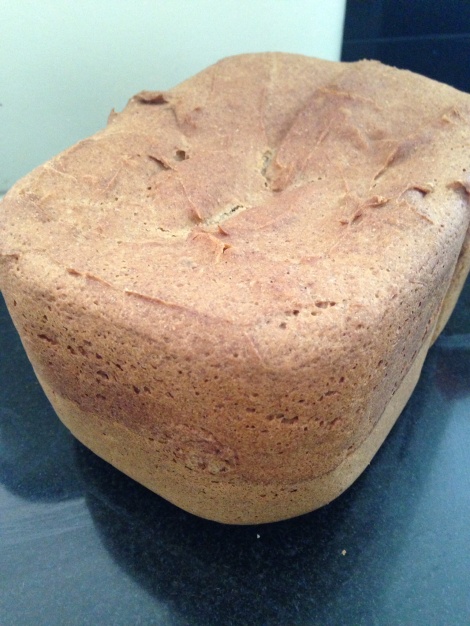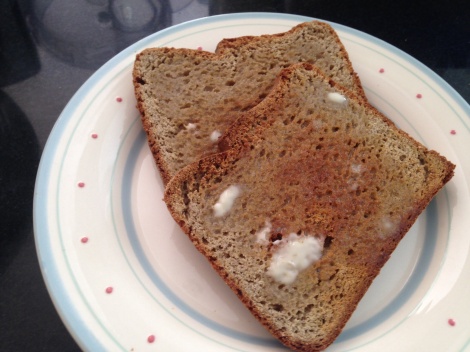You may recall some time ago that I had a series of disasters when I started to make my own gluten free bread. I thought it would be easy – just throw it all in the bread maker and let it work its magic. Boy was I wrong.
I set about discovering what worked and didn’t work and along the way I’ve developed something that I can feel proud of.
There are so many different gluten free flours available to buy. I will be putting the spotlight on each one over the next few weeks, but what it really boils down to when choosing gluten free flours for bread making is taste preferences. There are other factors to consider as well, but in order to understand these, you need to consider the whole process of how ingredients work together when baking. I promise, I am working on a post to explain all this in simple terms. Watch this space.
For the moment, though, I am sharing my bread recipe. You can use an all purpose gluten free flour mix if you like, but I urge you to experiment with the individual flours that you can buy. The most important thing to remember is that gluten free flours do not work in the same way as wheat flour, therefore you cannot substitute like for like. You can, however, achieve similar results if you use a mixture of gluten free flours and starches.
Ingredients:
150g Sorghum flour
150g Quinoa flour
50g Teff flour
100g Tapioca flour
50g Sweet rice flour
2 tsp. xantham gum
2 1/2 tsp. yeast
1 1/2 tsp. salt
1 tbsp. sugar
3 eggs
300ml water
80ml olive oil
1/2 tsp cider vinegar
Instructions:
Thoroughly mix all the dry ingredients together.
In a separate bowl, beat together the wet ingredients.
Add the dry ingredients to the wet and beat with an electric mixer (I use a hand mixer with dough hooks, as the mixture becomes too thick and sticky to use a balloon beater).
You should end up with a sticky dough. Pour this in to the bread machine pan and set the machine for either a gluten free or quick bake programme, with a dark crust.
NOTE 1: it is important to mix the ingredients beforehand because they don’t get mixed properly by the bread machine. Also, this step helps to incorporate air into the mix, which helps the loaf to rise.
NOTE 2: do not use an ordinary programme for baking. Gluten free dough has only one opportunity to rise and you will find with a full length programme that the machine will perform a second mixing stage after allowing the dough to rise. This will only serve to flatten your gluten free dough, leaving you with disappointing results.



0 Comments